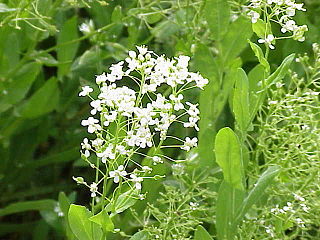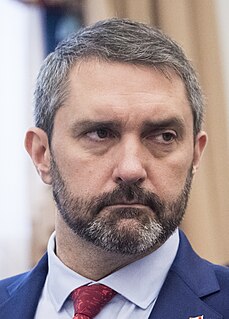
Yukon is the smallest and westernmost of Canada's three territories. It also is the second-least populated province or territory in Canada, with a population of 40,232 people as of the 2021 Census. Whitehorse, the territorial capital, is the largest settlement in any of the three territories.

Caswell County is a county in the U.S. state of North Carolina. It is located in the Piedmont Triad region of the state. At the 2020 census, the population was 22,736. The county seat is Yanceyville.

Fort Yukon is a city in the Yukon-Koyukuk Census Area in the U.S. state of Alaska, straddling the Arctic Circle. The population, predominantly Gwich'in Alaska Natives, was 583 at the 2010 census, down from 595 in 2000.

Dawson City, officially the City of Dawson, is a town in the Canadian territory of Yukon. It is inseparably linked to the Klondike Gold Rush (1896–99). Its population was 1,375 as of the 2016 census, making it the second-largest town in Yukon.

NatureServe, Inc. is a non-profit organization based in Arlington County, Virginia, US that provides proprietary wildlife conservation-related data, tools, and services to private and government clients, partner organizations, and the public. NatureServe reports being "headquartered in Arlington, Virginia, with regional offices in four U.S. locations and in Canada." In calendar year 2011 they reported having 86 employees, 6 volunteers, and 15 independent officers.

Lepidium draba, the whitetop or hoary cress, or Thanet cress, is a rhizomatous perennial flowering plant in the family Brassicaceae. It is native to western Asia and southeastern Europe and widely introduced elsewhere.

Florida sand pine scrub is an endangered subtropical forest ecoregion found throughout Florida in the United States. It is found on coastal and inland sand ridges and is characterized by an evergreen xeromorphic plant community dominated by shrubs and dwarf oaks. Because the low-nutrient sandy soils do not retain moisture, the ecosystem is effectively an arid one. Wildfires infrequently occur in the Florida scrub. Most of the annual rainfall falls in summer. It is endangered by residential, commercial and agricultural development, with the largest remaining block in and around the Ocala National Forest. Lake Wales Ridge National Wildlife Refuge also holds a high proportion of remaining scrub habitat, while the Archbold Biological Station near Lake Placid contains about 20 km2 (7.7 sq mi) of scrub habitat and sponsors biological research on it.

Monarda fistulosa, the wild bergamot or bee balm, is a wildflower in the mint family Lamiaceae, widespread and abundant as a native plant in much of North America. This plant, with showy summer-blooming pink to lavender flowers, is often used as a honey plant, medicinal plant, and garden ornamental. The species is quite variable, and several subspecies or varieties have been recognized within it.
Arthur Stanley Pease was a professor of Classics, a respected amateur botanist, and the tenth president of Amherst College in Amherst, Massachusetts. Pease was once described by his fellow faculty members as an "indefatigable pedestrian, and New Englander to the core."

Draba carnosula is a rare species of flowering plant in the family Brassicaceae known by the common name Mt. Eddy draba. It is endemic to the Klamath Mountains of far northern California, where it is known from fewer than twenty occurrences at Mount Eddy and other peaks in the range. This is a perennial herb forming small clumps in serpentine outcrops. The leaves are located at the base of the plant, each an oval shape under a centimeter long. They are mostly hairless, except for long hairs along the edges. The erect inflorescence bears fewer than 10 yellow mustardlike flowers. The fruit is a lance-shaped silique one or two centimeters long, containing several winged seeds.
Draba corrugata is a species of flowering plant in the family Brassicaceae known by the common name Southern California draba.
Primula capillaris is a rare species of flowering plant in the primrose family known by the common name Ruby Mountains primrose, or Ruby Mountain primrose. It is endemic to Nevada in the United States, where it is limited to the Ruby Mountains of Elko County.

Symphyotrichum falcatum is a species of flowering plant in the family Asteraceae. Commonly called white prairie aster and western heath aster, it is native to a widespread area of central and western North America.

The 2021 Yukon general election was held on April 12, 2021 to return members of the 35th Yukon Legislative Assembly. The election resulted in a hung parliament with the incumbent governing party, Yukon Liberal Party, and the opposition Yukon Party tied with 8 seats each, while the Yukon New Democratic Party held the remaining 3.

Draba weberi is a species of flowering plant in the family Brassicaceae known by the common names Weber's whitlow-grass and Weber's draba. It is narrowly endemic to Summit and Park Counties, Colorado, where several populations were estimated to total to approximately 300 individuals as of 2012. D. weberi is principally threatened by alterations to its hydrologic environment, owing to its preference for wet, rocky streamside crevices.
Nestotus macleanii, also known as the Yukon goldenweed, is a species of plant in the genus Nestotus. It is endemic to the Yukon, Canada. According to NatureServe, it is vulnerable but not currently at risk.
Draba kluanei, also known as Kluane draba, is a species of plant in the Draba genus. It is endemic to the Kluane National Park in the Yukon, Canada. It is listed as possibly extinct by NatureServe.
Draba yukonensis, also known as the Yukon draba or the Yukon whitlow-grass, is a species of plant of the Draba genus. It is endemic to the Yukon, Canada. It is listed as imperiled by NatureServe.

Symphyotrichum yukonense is a species of flowering plant in the family Asteraceae endemic to disjunct areas in Alaska and the Canadian territories of Yukon and Northwest Territories. Commonly known as Yukon aster, it is a perennial, herbaceous plant 5 to 30 centimetres tall. Its flowers have purple to blue ray florets and yellow to brown disk florets. S. yukonense grows at elevations of 300–1,500 metres in mud flats and on sandy or silty lake shores. It is a NatureServe Vulnerable (G3) species and is classified Imperiled (S2) in its Canadian range.

Symphyotrichum pygmaeum is a species of flowering plant in the family Asteraceae native to north Alaska, the Yukon, and Northwest Territories. Commonly known as pygmy aster, it is a perennial, herbaceous plant that may reach 1.5 to 15 centimetres tall. Its flowers have purple to violet ray florets and yellow disk florets.













